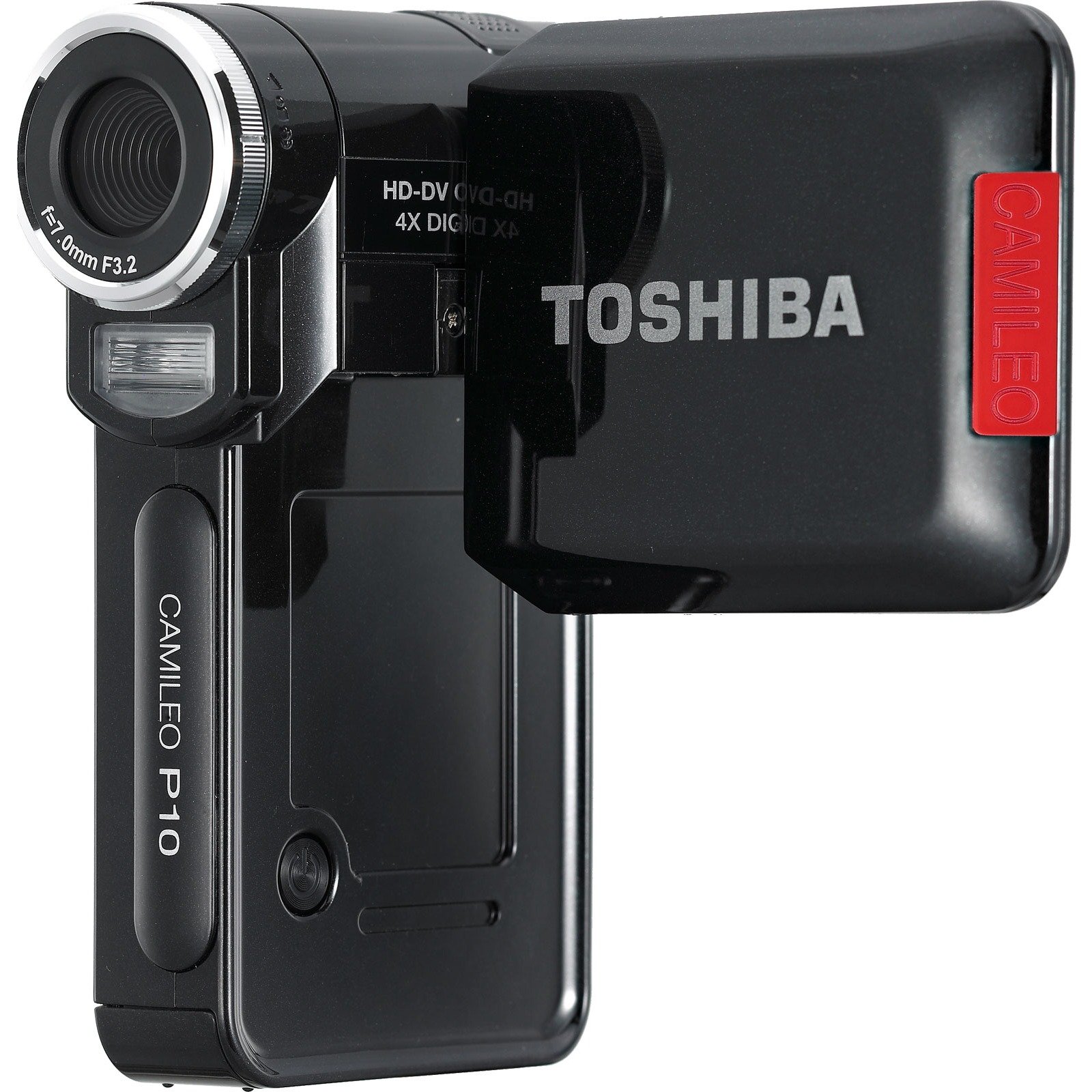
A new week has come to an end, which means it’s time to evaluate a new device recently bought at a Spanish flea market. This is no longer a PDA, as in the first and second parts of our rubric, but a video camera, which Toshiba calls a camcorder. This device was released in 2010, and at that time was a great camera with a lot of possibilities.
Let’s talk about the characteristics a little later, but for the time being, traditionally how I bought it. I’m not very versed in video equipment, so I avoided all sorts of cameras and cameras on my flea market, although there were quite interesting examples. But this time I decided to buy a cheap camera for children, so that they had something to learn. Toshiba Camileo P10 lay on the layout of a Romanian who sold a lot of other things. I liked it, and after bargaining I bought it for 3 euros.
The idea of what looks like a local flea market can be obtained by viewing this video (it was in the previous post, so if you saw it, feel free to skip it).
Does not work? Make
Guarantees that the camera is working, there was, that, in general, usually for the flea market. And I did not count on it. Together with the camera I was given a mini-USB charger from some phone. As it turned out later, it is quite suitable for charging the device.
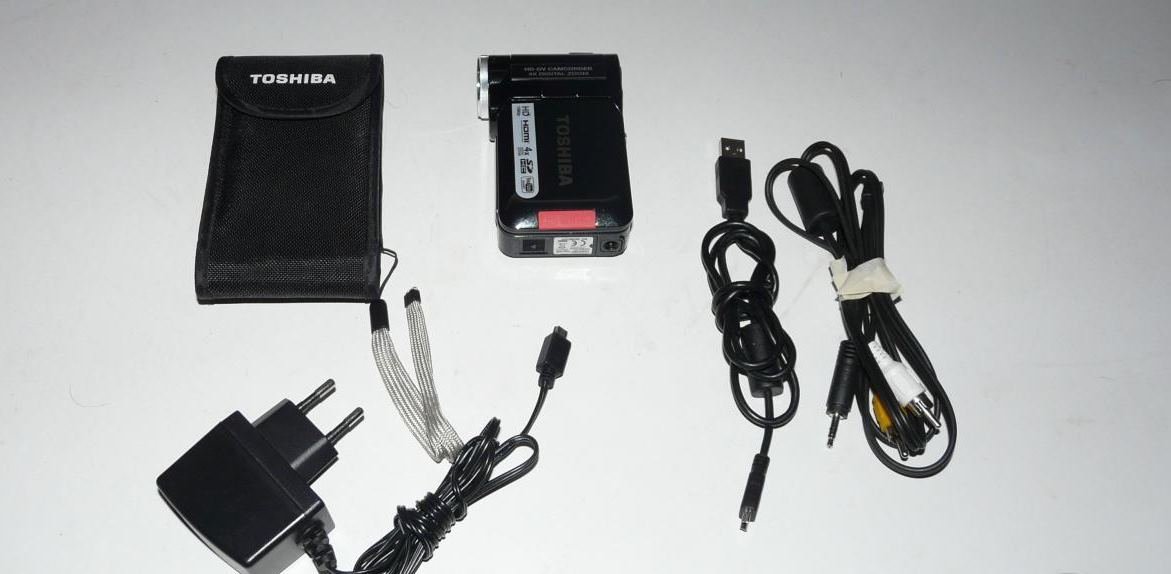
This should be the complete set of the camera. The kit includes a cover, a charger, a video cable and a mini-USB cable. In some cases, they also give a miniature tripod. I only got it myself and the non-native charger
After connecting the device to charging, the LED began to flash red. According to information posted by users of this camera in various forums, I realized that the charge is coming. Leaving the camera for several hours, I decided that upon my return I will be able to deal with it in detail.
But as it turned out, after 4 hours the camera did not charge at all. She did not turn on and did not show signs of life. Waving a hand on it, I gave the camcorder to the children for the tearing. A couple of days the device attracted their attention, but then stopped, and they gave me a “rattle”. Throw it was a pity, so I decided to try to figure out what could be the matter.
I then thought that the problem is most likely in the battery. I measured the voltage at the contacts with a multimeter, and it was almost zero. That is, charging did not go at all, despite the fact that the charge indicator of the camera was working. Batteries, being discharged to zero, sometimes do not really charge, even if with them more or less everything is normal. And in order to bring the battery to life, you need to give a little more voltage than indicated in the instructions. So I did – I took an external battery that gives 5 volts instead of 3.5 needed, and for 20 seconds brought current from the battery to the camera battery contacts. After that, the camera immediately turned on, though only for a few seconds. After reconnecting the charger, I waited a couple of hours. Now the battery of the camera is charged at 100%.
Camera study
After that, you could already study the device in detail. Honestly, I did not even look online, what it is and what characteristics it has, since the device was originally bought as a toy for children. Even after the camera turned on, I decided to take a look, what fell into my hands this time. As it was mentioned above, the characteristics of the system looked impressive for 2010.
Main characteristics
- Media type: rewritable memory (Flash);
- The amount of built-in flash memory: 131.07 MB;
- Support for high-definition video: Full HD 1080p;
- The maximum resolution of video shooting: 1920 × 1080;
- Night mode: yes;
- Matrix type: CMOS;
- Number of matrices: 1;
- Matrix: 5 megapixels;
- Focal length of the lens: 7 mm;
- Zoom digital: 4x;
- Aperture: F3.2;
- Image stabilizer: yes;
- LCD screen: there is (2.5 “);
- Viewfinder: no;
- White balance: auto, preset;
- Recording formats: 720p, 1080p;
- The photo-mode: is;
- The maximum resolution of photography: 3200×2400 pixels;
- Interfaces: AV-out, HDMI-out, USB-interface;
- Writing to a memory card: yes;
- Support for memory cards: SD;
- The maximum battery life: 2.25 h;
- Construction: presence of flash;
- Dimensions (WxHxD): 71x108x34 mm;
- Weight: 480 grams.
The camera settings turned out to be simple, the menus are quite logical. The menu is divided into four parts. This is the video setting (resolution, stabilization, motion detection), photo adjustment (resolution, flash, self-timer), shooting mode settings (scene, shutter speed, white balance) and additional settings (sound effects, on-screen information, time settings, TV mode, language and default settings.)
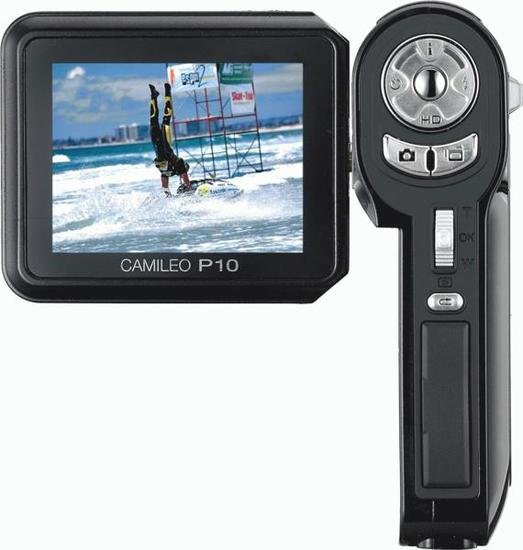
Most control buttons are located on the back of the camera. A smooth round button in the middle calls up the settings menu. Four side buttons of the joystick – this displays information on the screen, turn on / off the flash, set the shooting resolution and self-timer. Below is a double button – shooting photos and video. Even lower is the zoom lever, which acts as a menu switch and returns to the previous menu.
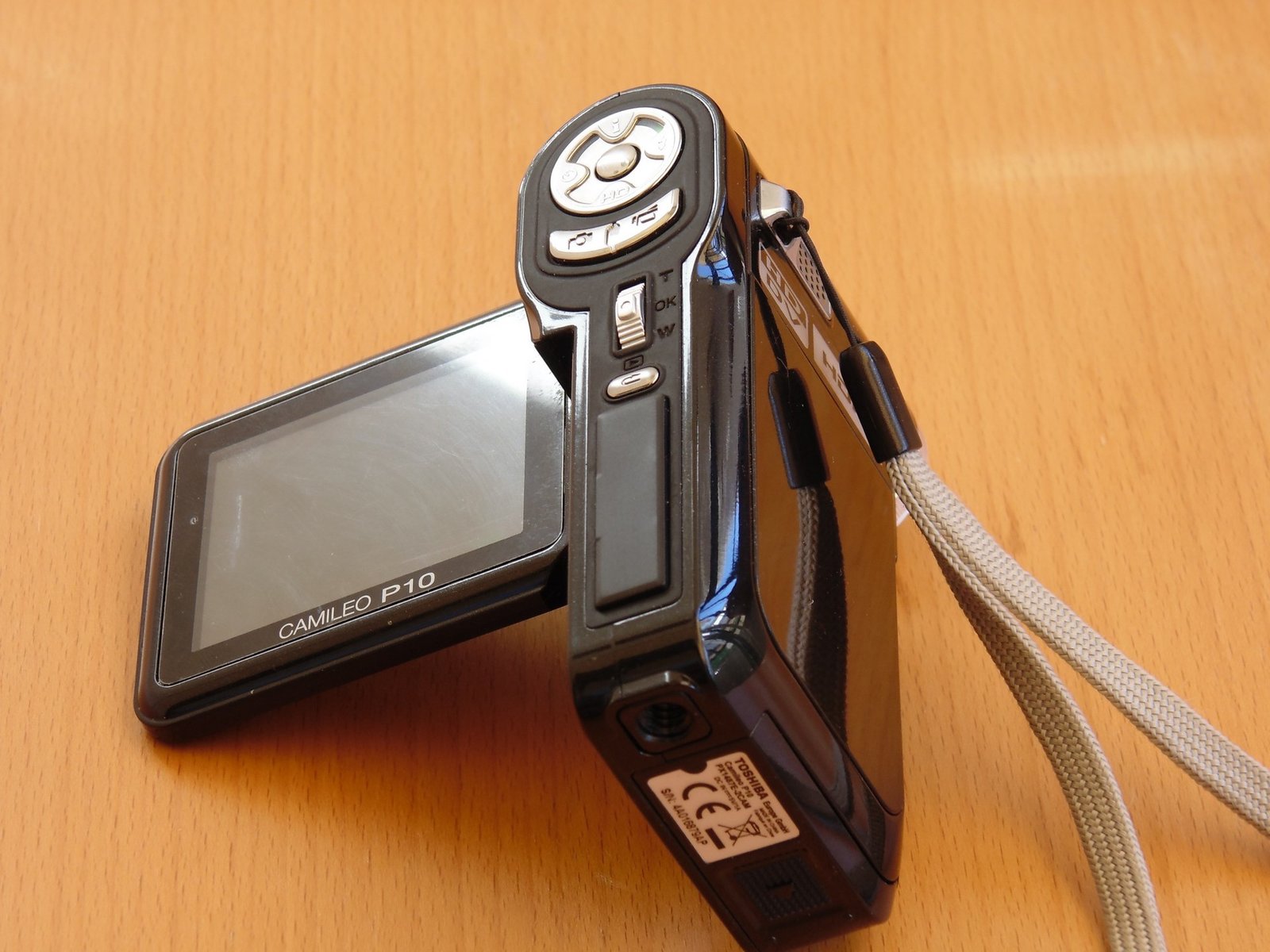
The rubber stopper that closes the input for mini-USB cable, HDMI- Connector and output for TV. At the bottom there is a battery connector and a memory card.
LCD screen – rotary (360 degrees). It can be kept “face” to yourself when shooting, or you can turn it in the opposite direction. This is useful if you do selfie or “self” video. The camera turns on automatically when you rotate the screen. Turned off if you press the screen back to the case again.
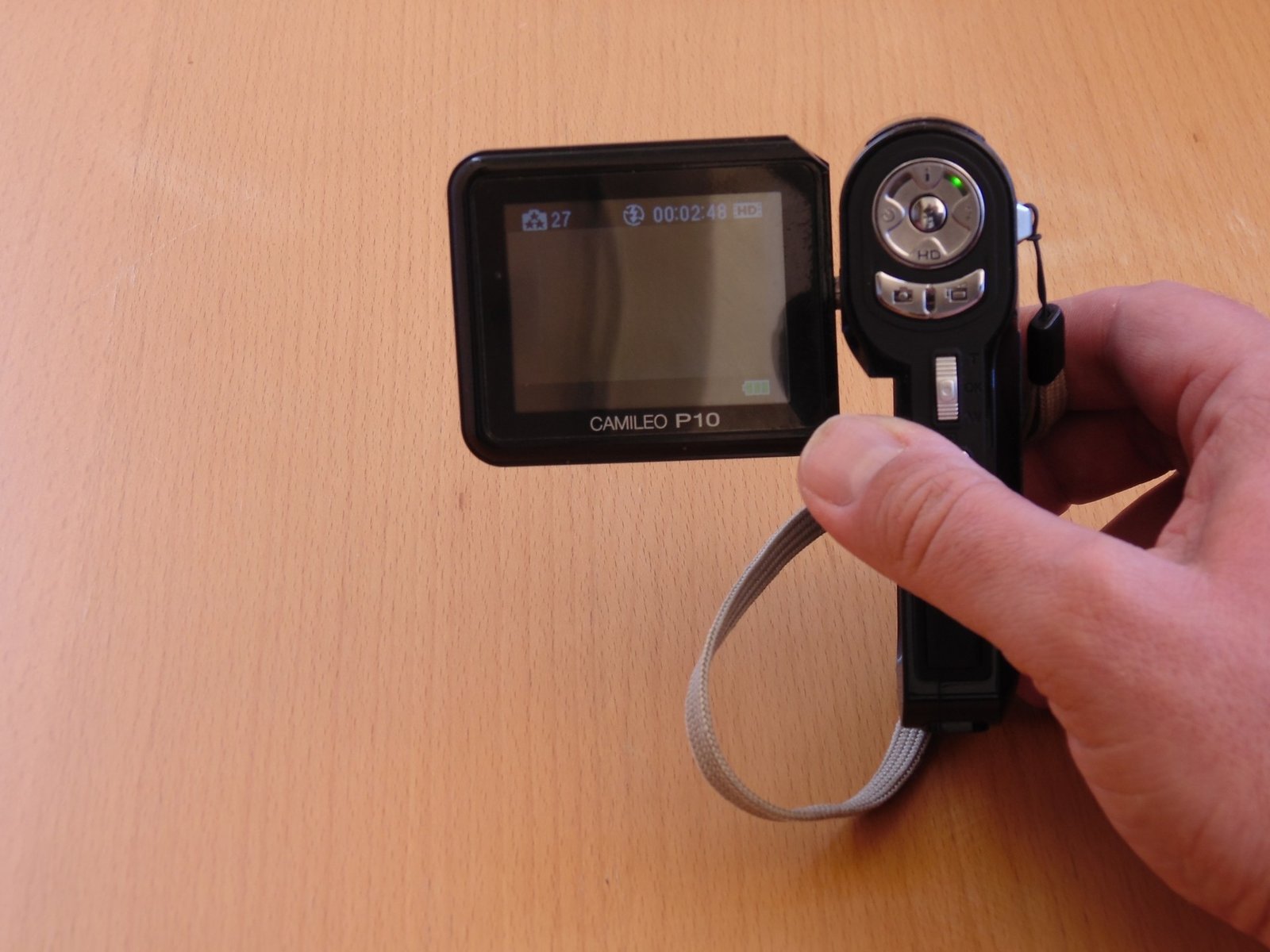
You can press the screen with the back side to the case.

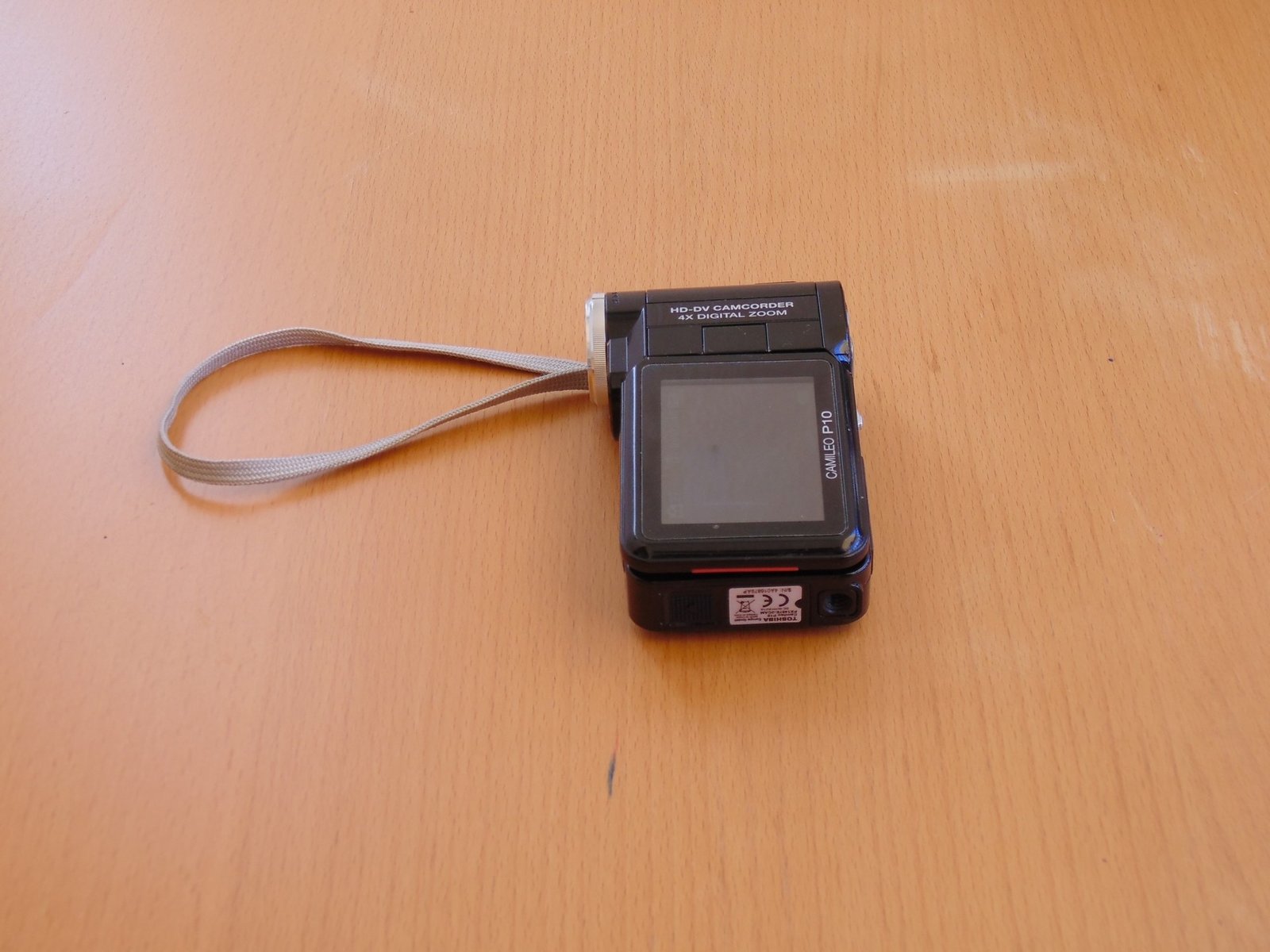
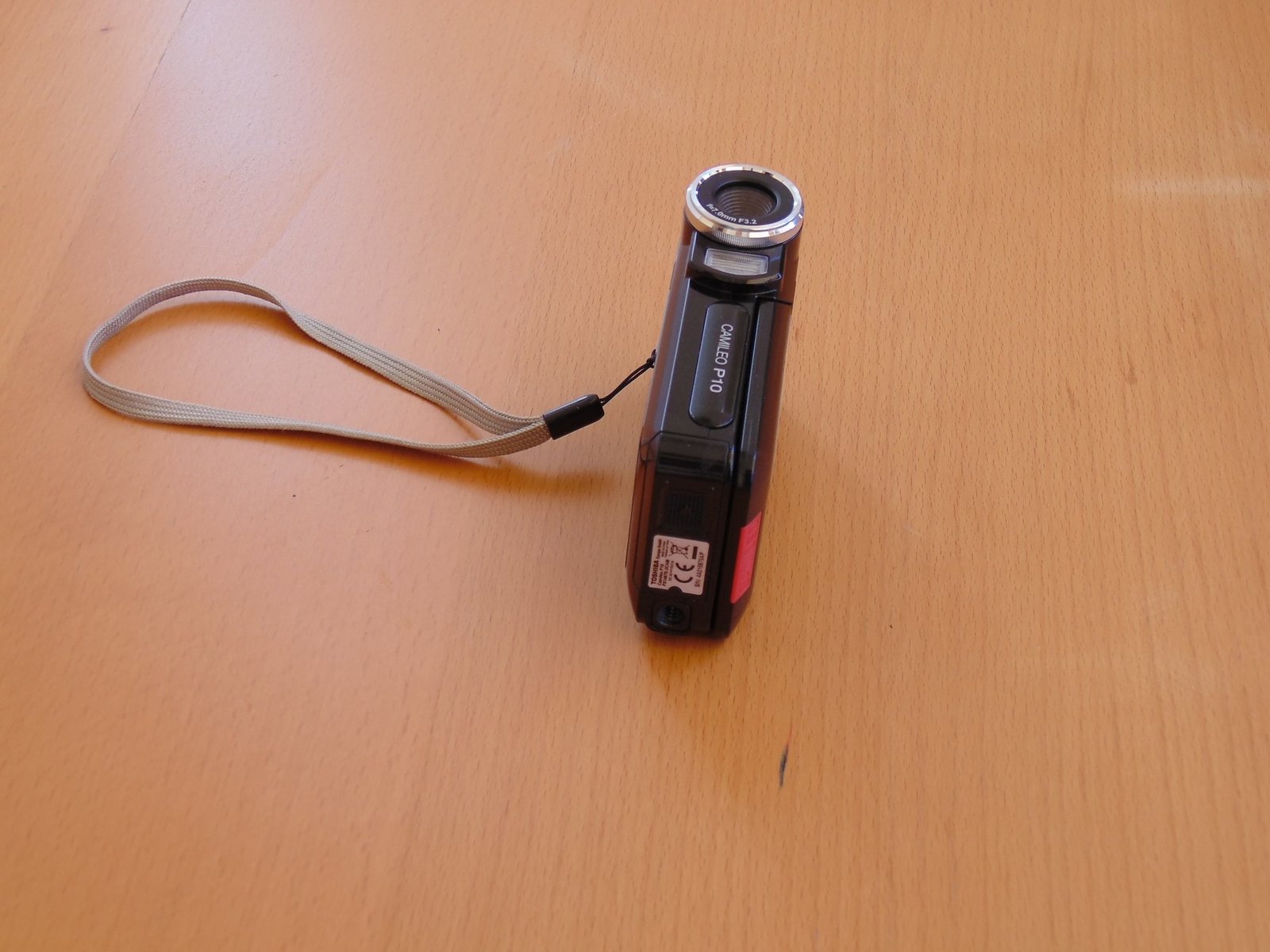
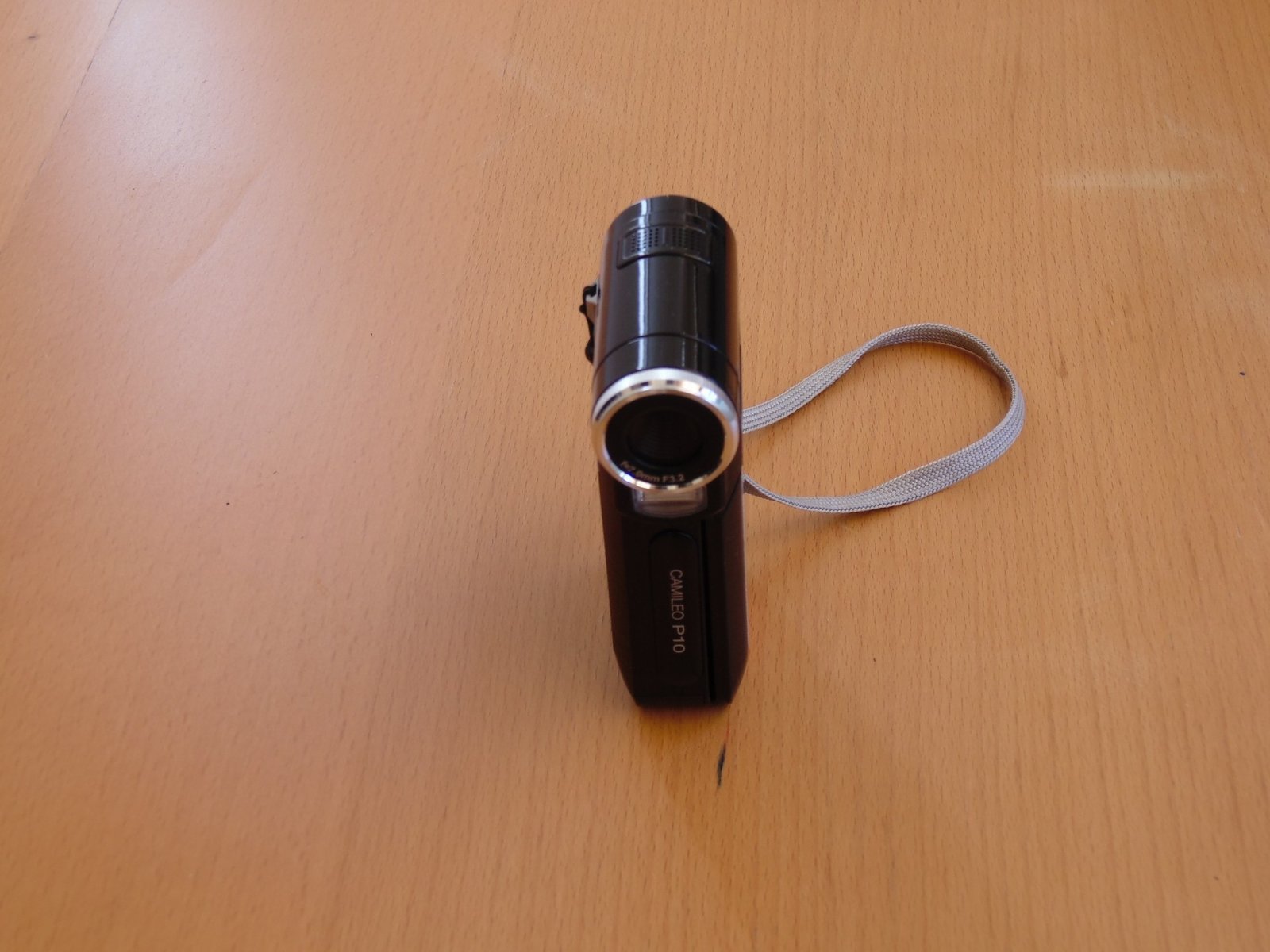
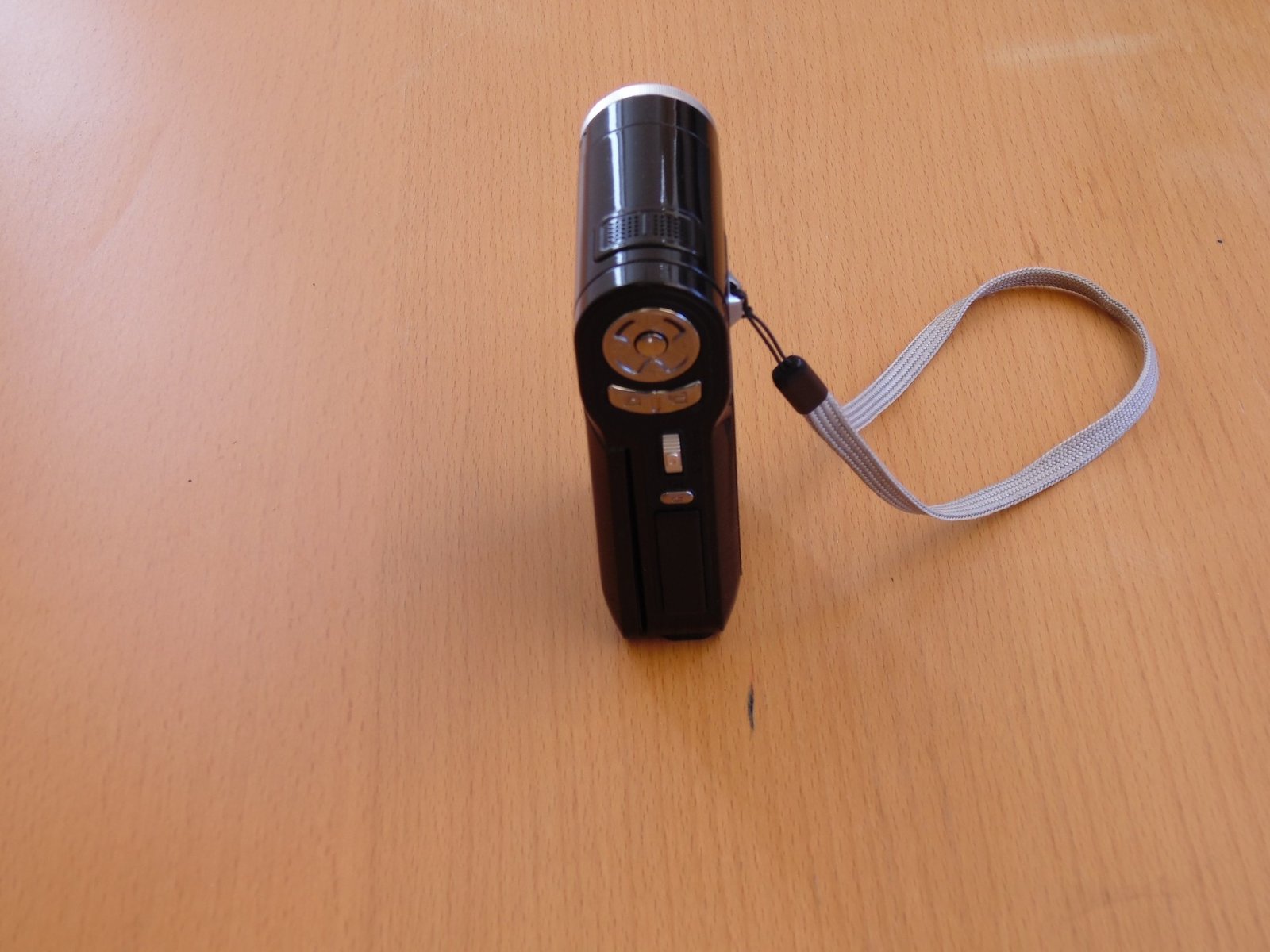
The microphone is located at the top of the device. By the way, the modes “landscape / portrait / macro” are switched manually. To select the desired mode, you need to rotate the metal rim of the lens. This is not a very convenient solution, because you can forget about switching and nasnimat mountain photos and videos, only then realizing that the mode was chosen incorrect.
Photo and video – what is the device capable of?
For the camera test, I made a series of photos using different modes, from landscape to macro photography. Here are these photographs.
The tripod, by the way, I also bought On the flea market. I paid 5 euro for it. Very convenient thing. As I understand it is a tripod for beginners, but it’s enough for my needs.
I took a photo of the name of my columns bought from one Spaniard. I’m going to write about this in a week (I had to restore them, plus buy an amplifier), but here’s the problem – I did not find a single mention of these columns on the Internet. For the first time with such a face. It seems to be Fisher – a very famous manufacturer of audio equipment, but here the model STE-950 is nowhere. Maybe someone knows what these columns are, when they were released or how much they cost?
And more photos from the nearby park.
Here are photos taken using different modes in the same park.
Macro photography of flowers, where without it.
Now shooting the video. Captured a video in the nearest park. He came home, looked at all this, decided that he was shooting the camera terribly.
But, as it turned out, the problem is not in the camera, but in its own curvature. Probably, the videographer of me will never work. Here’s a shot of the same camera, the movie I found on YouTube. To be honest, it’s much better than what I got.
The camera shoots continuously, as far as the memory card capacity is. I inserted an SD memory card with a capacity of 8 GB, as the device showed, should be enough for 2 hours and 40 minutes of shooting. Photos can be made about a thousand, which is quite enough.
You can see the footage on the camera screen.
There are two ways to reset the photo and video. The first is to remove the memory card and connect it to the computer. The second is to connect the camera with a mini-USB data cable. In this case, two additional media appear immediately in the system: the device’s memory and the memory card. In principle, it is convenient enough. Plus, the camera in this case can also be used as a flash drive.
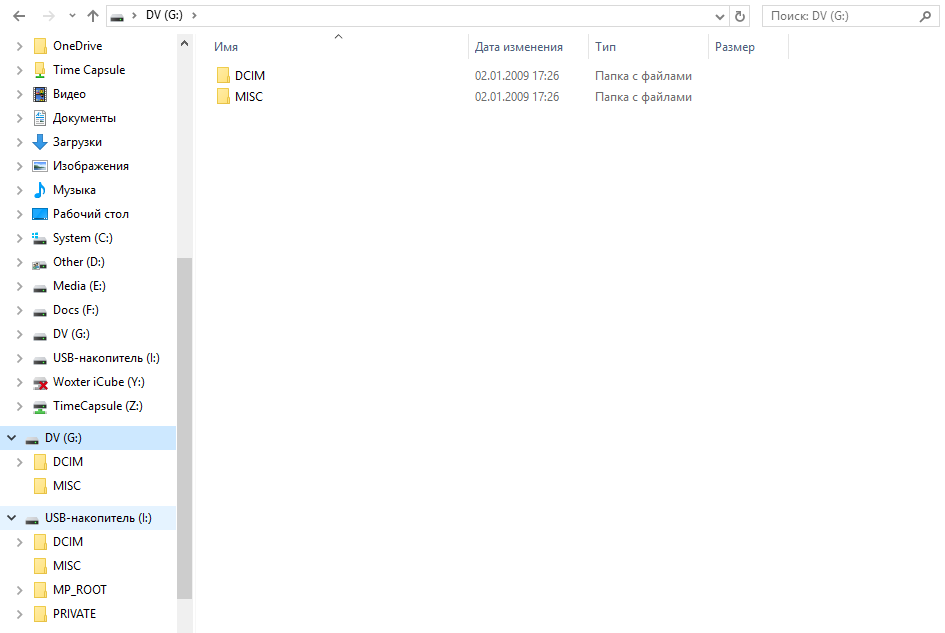
I did not try to connect the camera to the TV for a simple reason – I do not have it.
General conclusions
Personally, I liked the camera.
I understand that in Spain these devices are still popular (or were previously), perhaps many users are working with them so far. In general, the device is convenient – with its help you can quickly get a movie and upload it to YouTube. True, the quality leaves much to be desired. Probably, having played with the settings, you can get a video of much better quality than I could.
The photos are quite good, especially with good lighting. Here it is necessary to say that the shooting is possible only in conditions of good illumination. As soon as the brightness level of the lighting decreases, write is lost – the quality of the video and the photo falls by an order of magnitude. Noises, artifacts, pixelity – all this appears instantly.
Keep the camera comfortable, in a closed form it fits freely in your pocket. The screen of the camera is rotary and very comfortable. Fastening it to the body is reliable. Probably something can be broken only if you drop the device with an open screen.
Among the shortcomings of the camera – the lack of the ability to memorize settings. Every time I have to adjust the mode again.
How much does it cost now?
On eBay, I did not find such products on sale. But on the local analogue, the Wallapop website, such cameras were found. The price dispersion is very large – from 15 to 100 euros and even higher.
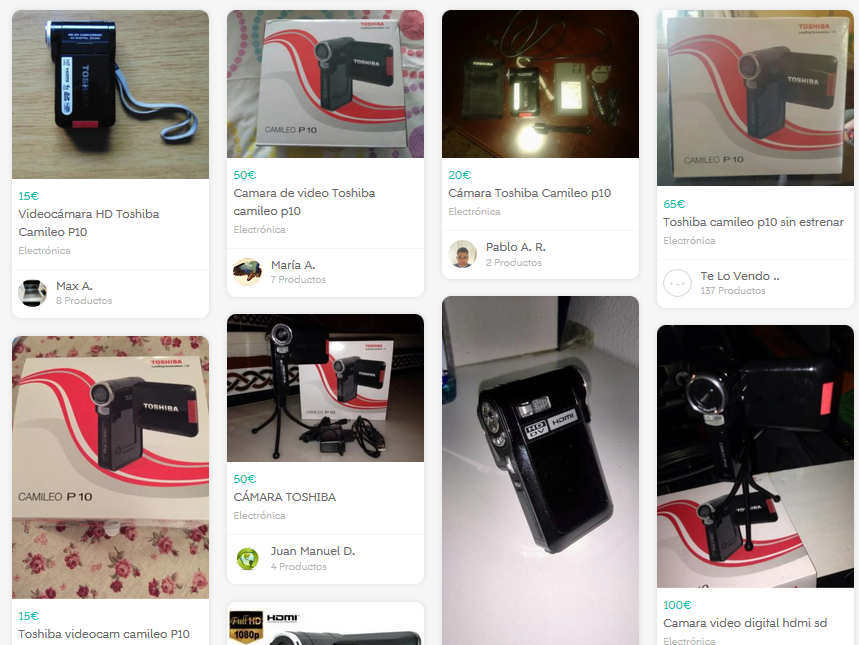
After the review was already written, I looked for other reviews of the Camileo line on Geetimes and Habrahabra. As it turned out, there are such materials. Both are written in 2010. The first is devoted to the review of the Toshiba Camileo P30, the second is to the Toshiba Camileo BW10.
This week I plan to release another review – either a children’s camera from VTech, or a review of the Fisher columns, discussed above and an amplifier for them, Bought at the same flea market.








